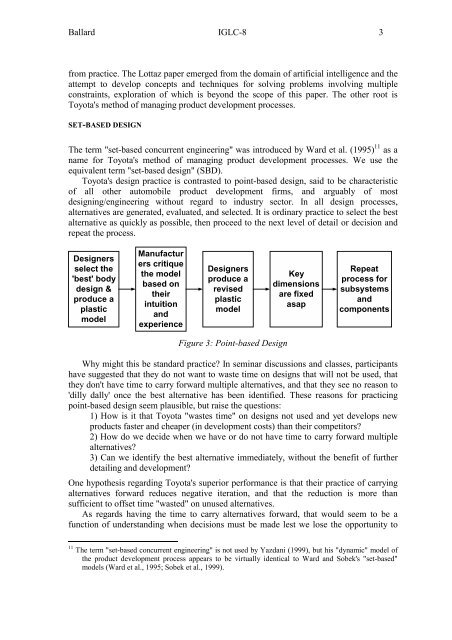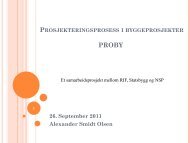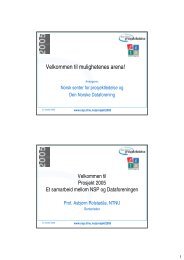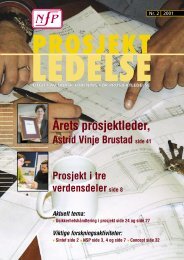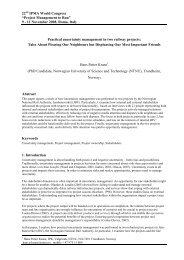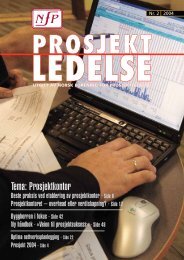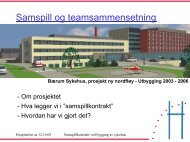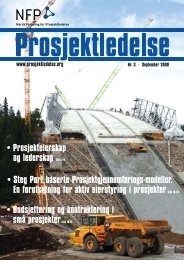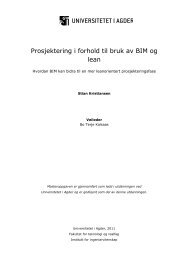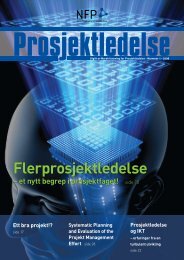positive vs negative iteration in design - Lean Construction Institute
positive vs negative iteration in design - Lean Construction Institute
positive vs negative iteration in design - Lean Construction Institute
Create successful ePaper yourself
Turn your PDF publications into a flip-book with our unique Google optimized e-Paper software.
Ballard IGLC-8 3from practice. The Lottaz paper emerged from the doma<strong>in</strong> of artificial <strong>in</strong>telligence and theattempt to develop concepts and techniques for solv<strong>in</strong>g problems <strong>in</strong>volv<strong>in</strong>g multipleconstra<strong>in</strong>ts, exploration of which is beyond the scope of this paper. The other root isToyota's method of manag<strong>in</strong>g product development processes.SET-BASED DESIGNThe term "set-based concurrent eng<strong>in</strong>eer<strong>in</strong>g" was <strong>in</strong>troduced by Ward et al. (1995) 11 as aname for Toyota's method of manag<strong>in</strong>g product development processes. We use theequivalent term "set-based <strong>design</strong>" (SBD).Toyota's <strong>design</strong> practice is contrasted to po<strong>in</strong>t-based <strong>design</strong>, said to be characteristicof all other automobile product development firms, and arguably of most<strong>design</strong><strong>in</strong>g/eng<strong>in</strong>eer<strong>in</strong>g without regard to <strong>in</strong>dustry sector. In all <strong>design</strong> processes,alternatives are generated, evaluated, and selected. It is ord<strong>in</strong>ary practice to select the bestalternative as quickly as possible, then proceed to the next level of detail or decision andrepeat the process.Designersselect the'best' body<strong>design</strong> &produce aplasticmodelManufacturers critiquethe modelbased ontheir<strong>in</strong>tuitionandexperienceDesignersproduce arevisedplasticmodelKeydimensionsare fixedasapRepeatprocess forsubsystemsandcomponentsFigure 3: Po<strong>in</strong>t-based DesignWhy might this be standard practice? In sem<strong>in</strong>ar discussions and classes, participantshave suggested that they do not want to waste time on <strong>design</strong>s that will not be used, thatthey don't have time to carry forward multiple alternatives, and that they see no reason to'dilly dally' once the best alternative has been identified. These reasons for practic<strong>in</strong>gpo<strong>in</strong>t-based <strong>design</strong> seem plausible, but raise the questions:1) How is it that Toyota "wastes time" on <strong>design</strong>s not used and yet develops newproducts faster and cheaper (<strong>in</strong> development costs) than their competitors?2) How do we decide when we have or do not have time to carry forward multiplealternatives?3) Can we identify the best alternative immediately, without the benefit of furtherdetail<strong>in</strong>g and development?One hypothesis regard<strong>in</strong>g Toyota's superior performance is that their practice of carry<strong>in</strong>galternatives forward reduces <strong>negative</strong> <strong>iteration</strong>, and that the reduction is more thansufficient to offset time "wasted" on unused alternatives.As regards hav<strong>in</strong>g the time to carry alternatives forward, that would seem to be afunction of understand<strong>in</strong>g when decisions must be made lest we lose the opportunity to11 The term "set-based concurrent eng<strong>in</strong>eer<strong>in</strong>g" is not used by Yazdani (1999), but his "dynamic" model ofthe product development process appears to be virtually identical to Ward and Sobek's "set-based"models (Ward et al., 1995; Sobek et al., 1999).


